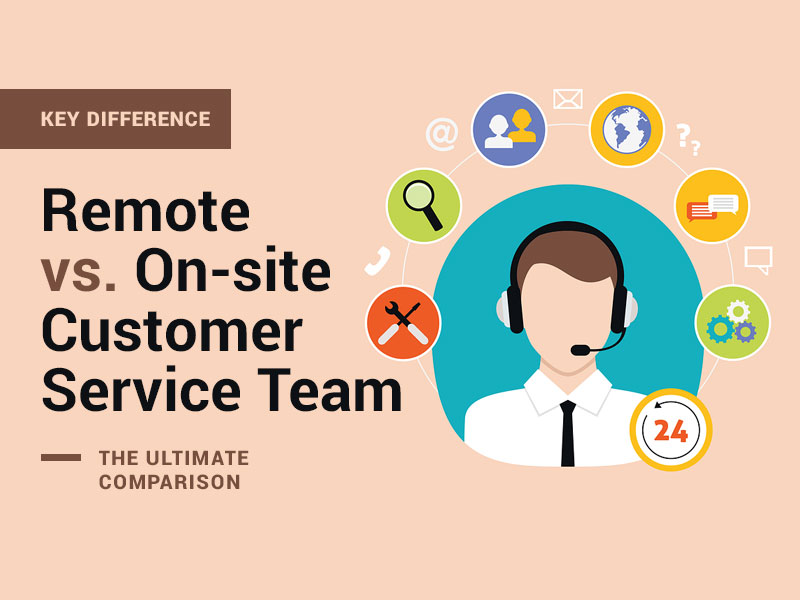What is customer service? It’s the act of providing support to your customers before and after they buy and use your products or services. This enables them to have an easy experience with your brand.
Note that the objective of customer service isn’t only about solving a customer’s problems and closing tickets. It’s also about building a long-term relationship with the customers. One where interactions with customers provide an opportunity for more valuable engagement.
It’s crucial to note that happier customers will continue doing business with you. Also, it’s more expensive to attract new customers than it is to retain the existing ones. Good customer service also sets you apart from other brands offering similar services.
With loyalty on the line, customer service teams have to master the art of great customer service. Here are the pillars of great customer service. They will help to empower your team and harness the right technology, including meeting your customer’s expectations. They would:
- Train the customer service team on soft and hard skills.
- Ensure there’s a good balance between quality and speed of service provided.
- Encourage collaboration especially with a remote team to ensure they act as one team.
- Provide customer service on every medium such as social media, text, and others.
- Connect customer service to the broader organizations through the customer relationship management software.
- Turn customer service into a revenue driver through AI such as call center software. It helps to track call metrics and the performing workforce management.
Remote Customer Service Team
Remote customer service is a growing trend in today’s working environment. Like other positions, remote customer service roles are becoming permanent. A lot of organizations are allowing their teams to work from home or elsewhere. Some are even hiring a customer service virtual assistant from around the world. When businesses outsource specialized roles such as customer support, they gain the advantage of working with experts who stay up-to-date with industry trends and tools.
The reason remote working has become popular is that more people want flexibility in their lives and given the recent events, more organizations are considering remote employees. Such events include extreme weather conditions and natural disasters like the Covid-19 pandemic.
The world we live in is becoming more unpredictable. That’s why it is more important to have the right tools in place for teams to work remotely and efficiently when necessary.
Cloud-based technology is making remote customer service easier for organizations of different sizes. Through virtual contact center software, brands can support their customers from anywhere. This software enables call center agents to receive inbound customer calls as well as manage outbound questions.
With flexible deployment options, virtual call center systems provide a cost-effective solution. If you’re thinking of building a remote customer service team, here are some advantages to take note of:

1. Better Performance and Productivity
Improved performance is one of the benefits of working remotely. Employees are less prone to long hours of meaningless conversations and wasted hours of commute. Apart from these, other distractions at work can affect productivity.
Freeing your team from these distractions enables them to invest their time in work. It enables them to stay focused and complete their tasks promptly. Especially with the help of contact center solutions.
According to a survey, 51% of respondents say that their productivity increased during the Covid-19 lockdowns. That’s because they were working from home.
2. Better Work-life Balance
For the longest time, employees have been working tirelessly from 9 to 5 in offices. They sometimes have to work overtime. The long working hours and an abundance of workload have led to an imbalance in work and personal life.
Families have had to suffer due to separation for long hours. On a personal level, employees have suffered from not getting enough time for themselves. But working from home saves them time, allowing them to invest their time in work and themselves. An employee can also end their work at their timings.
They don’t have to spend a minimum amount of time at the office. But are at liberty to spend as much time as their work responsibilities allow them to. The amount of time doesn’t matter as long as work is done in time.
3. Autonomy
Another benefit of remote customer service is the autonomy that comes with it. On-site customer service restricts employees’ freedom. That’s considering that it chains them to their desk for long hours.
Remote working enables employees to adjust their timings according to their liking. They can complete their tasks the way they want. Autonomy also improves an employee’s creativity thus, enabling them to be imaginative. This also enables them to bring in more creative ideas that contribute to the success of a business.
4. Health Benefits
Improved health for employees is one of the biggest benefits of remote work, both mentally and physically.
A lot of people find the office environment stressful and pressuring. That’s because of the constant tension that negatively impacts their health. There are a lot of health benefits that come with remote customer service work. Apart from reducing mental stress, it also helps with better physical health.
Remote work improves one’s health by bringing the freedom not to commute. Including no restricted working hours and no rushes. Relaxed working hours also enable them to adjust their time and dedicate part of it to the gym or workouts. As a result, they can maintain their health while working from home.
On-site Customer Service Team
The most important factor when offering on-site customer service is clear communication. It requires a complete understanding of the scope of customers’ issues. It ensures that employees have the necessary equipment before eliminating the need for repeat visits.
When customers come to the workplace, it helps them to know exactly what will happen. This requires giving them instructions on how to enter the office. They should know, for instance, if they’ll need to wear personal protective equipment. Here are some of the benefits of on-site customer service if that’s what you’re considering:

1. Easy Onboarding and Firm Management
Onboarding new employees is easy if a department is located in the office building. That’s because it goes beyond giving documentation to their employees. If the customer service team works a few feet away from the new team, it becomes easy to help each other out.
It may be that your team leads prefers having close contact with the team. In such a case, having all employees in one physical location makes it easy to manage them.
2. Communication and the Flow of Ideas
On-site customer service teams are important for the development of new products. That’s because any bugs reported can be brought up in a meeting and discussed and resolved formally or informally.
Few great customer support ideas are born on Trello boards, but some of the best ones come up during meetings with a whiteboard. They are born when great minds meet over a cup of coffee to discuss possible solutions. This is simply not possible for remote customer service teams.
3. Consistent Support
Onsite customer service teams help organizations to streamline and standardize technical processes. Apart from improving productivity for end users, it also helps to ease the burden on the internal IT team for instance.
When choosing an IT services, similar to the services provided by IT security in Denver, go for one with proven methodologies to their on-site support. A good example is a service provider having thorough and regulated dispatch procedures. This proves that they can take full ownership and offer consistent support.
Moreover, gathering IT support from a single point of contact enables you to become familiar with its infrastructure. As well as people and a history of technical setbacks. This knowledge contributes to consistent levels of support and more prompt resolutions.
Conclusion
Customer service either remote or on-site is the lifeblood of any organization. When it’s good, it gives you a competitive edge and customers keep coming back and vice versa. It’s one of the best ways to ensure you have a continuous stream of income from satisfied customers.






